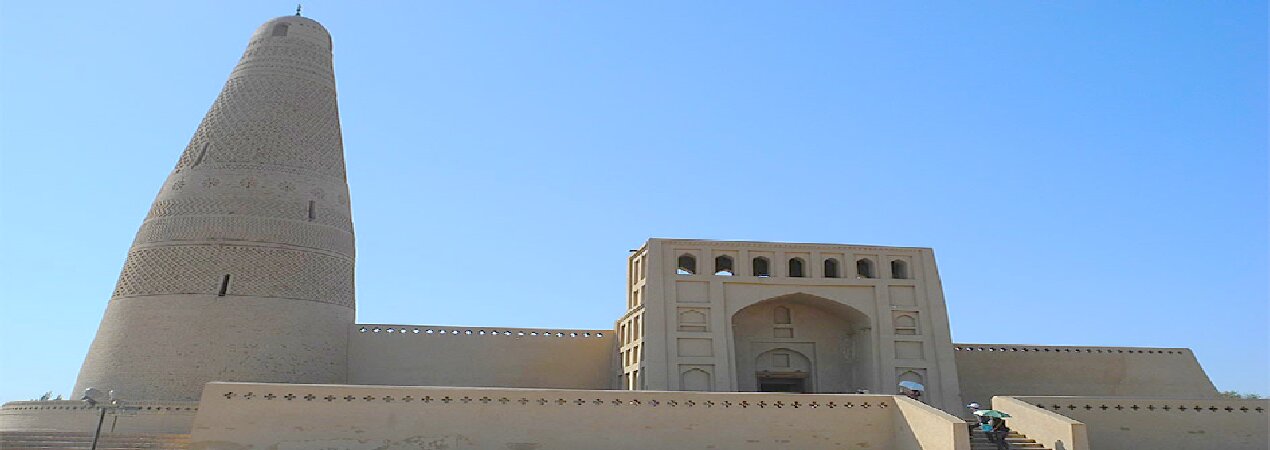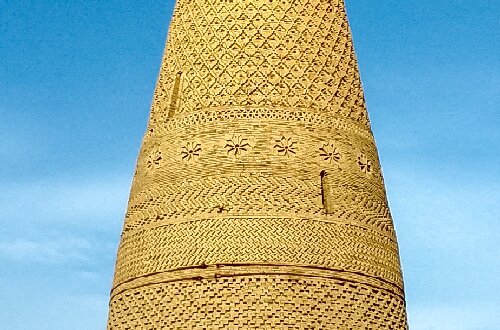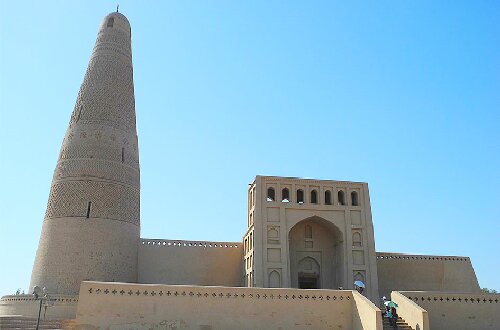Sugong Pagoda

Sugong Pagoda, also known as "Emin Tower", is located in the southeastern suburbs of Turpan City, Xinjiang Uygur Autonomous Region. It was built in the 42nd year of the Qianlong Reign of the Qing Dynasty (1777) and has a history of more than 200 years. As an ancient building of great historical and artistic value, it is also the only ancient tower with Islamic style among China's 100 Famous Towers. With its unique shape and exquisite craftsmanship, it demonstrates the outstanding wisdom of ancient craftsmen.
- Chinese name: 苏公塔 Sū Gōng Tǎ
- Suggested time: 2 hours
- Ticket: 45 yuan per person
- Open hours: 09:30 - 19:30
- The best time to visit: Spring (March - May) and autumn (September - November) are great, with relatively mild weather. But it can also be visited throughout the year.
- Address: Munar Village, Grape Township, 2 kilometers east of Turpan City, Xinjiang Uygur Autonomous Region, China (at the intersection of Munar Road and County Road 051, 700 meters south)
- How to get there: It's convenient to take a taxi from the city center of Turpan
- Surroundings: Turpan Emin Khoja Palace
Highlights of Sugong Pagoda
The Architecture of Sugong Pagoda
 Patterns on Sugong Pagoda
Patterns on Sugong PagodaConstructed entirely from uniform gray bricks, the pagoda features a round, cylindrical body that gradually tapers from the bottom to the top. It is said that the base has a diameter of 10 meters, the top measures 2.8 meters in diameter, and the pagoda stands 37 meters tall. Fourteen windows are built at different heights and in different directions around the tower for ventilation and lighting. Inside, a 72 - layer spiral staircase made of bricks forms a central pillar, supporting the entire structure without any wooden materials.
Through the ingenious craftsmanship of Uyghur artisans, the adobe bricks are arranged into more than 10 types of geometric patterns—waves, diamond grids, and circular flower motifs repeat in an endless, dynamic variation. Standing at the base and looking up, visitors seem to be in front of a complex, ever - changing decorative painting.
Sugong Pagoda Mosque
 Sugong Pagoda and Sugong Pagoda Mosque
Sugong Pagoda and Sugong Pagoda MosqueThe Sugong Pagoda Mosque, adjacent to the Sugong Pagoda, covers an area of 2,500 square meters. It is rectangular in plan and consists of a gate, a lobby, a prayer hall, a mihrab (arch niche), and surrounding preaching rooms. Above the gatehouse of the main gate is a "Baiq Building" (call to prayer tower), which is where the mosque summons Muslims to prayer. The interior of the mosque is the prayer hall, which has skylights on the upper part for ventilation and lighting. It can accommodate over a thousand people for worship. Entering the gate, you can see the dome-shaped vault, the beautifully shaped horseshoe-shaped arch, as well as numerous niches and dim preaching rooms, which showcase the characteristics of Islamic architecture and a strong atmosphere of religious life everywhere.
Educational Value
The entire pagoda is built with adobe bricks, 44 meters high but without a single wooden beam. The center of gravity is lowered by the cone shape (10 meters in diameter at the bottom and gradually narrowing at the top), and the spiral internal staircase forms a "mechanical skeleton". The wind and earthquake resistance has been verified for more than 200 years, vividly demonstrating the physical principle of "structural stability".
Activities to do at Sugong Pagoda
Exploration of the "sundial" principle: Measure the length of the shadow next to the pagoda at noon on a sunny day, try to estimate the time using the "sundial" principle, and compare it with the mobile phone clock to verify the ancient people's "sun clock" wisdom.
Artistic creation: The Sugong Pagoda is very distinctive. You can observe the staggered masonry craftsmanship of adobe bricks on the pagoda body and 14 geometric patterns (wave patterns, diamond patterns) up close, and then make sketches or other artworks.
Drop us a line and we'll connect you with the top China expert in no time!